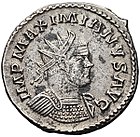
Back استحقاقات الموظفين Arabic Zaměstnanecké výhody Czech Frynsegode Danish Sachbezug German Laborista benefico Esperanto Beneficios laborales Spanish Erisoodustus Estonian مزایای شغلی Persian Luontoisetu Finnish Աշխատակիցների հատուցումներ Armenian
| Personal finance |
|---|
 |
| Credit · Debt |
| Employment contract |
| Retirement |
| Personal budget and investment |
| See also |
Employee benefits and benefits in kind (especially in British English), also called fringe benefits, perquisites, or perks, include various types of non-wage compensation provided to employees in addition to their normal wages or salaries.[1] Instances where an employee exchanges (cash) wages for some other form of benefit is generally referred to as a "salary packaging" or "salary exchange" arrangement. In most countries, most kinds of employee benefits are taxable to at least some degree. Examples of these benefits include: housing (employer-provided or employer-paid) furnished or not, with or without free utilities; group insurance (health, dental, life etc.); disability income protection; retirement benefits; daycare; tuition reimbursement; sick leave; vacation (paid and unpaid); social security; profit sharing; employer student loan contributions; conveyancing; long service leave; domestic help (servants); and other specialized benefits.
The purpose of employee benefits is to increase the economic security of staff members, and in doing so, improve worker retention across the organization.[2] As such, it is one component of reward management. Colloquially, "perks" are those benefits of a more discretionary nature. Often, perks are given to employees who are doing notably well or have seniority. Common perks are take-home vehicles, hotel stays, free refreshments, leisure activities on work time (golf, etc.), stationery, allowances for lunch, and—when multiple choices exist—first choice of such things as job assignments and vacation scheduling. They may also be given first chance at job promotions when vacancies exist.
- ^ "BLS Information". Glossary. U.S. Bureau of Labor Statistics Division of Information Services. February 28, 2008. Retrieved 2009-05-05.
- ^ Abenity: What Does It Cost To Replace An Employee?